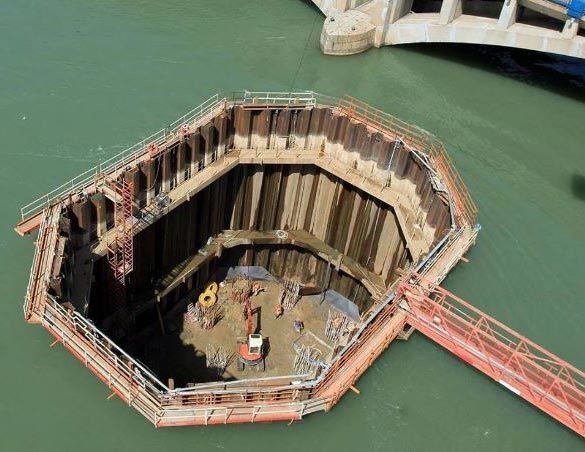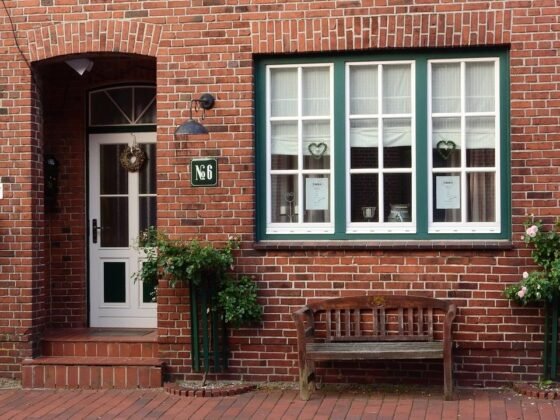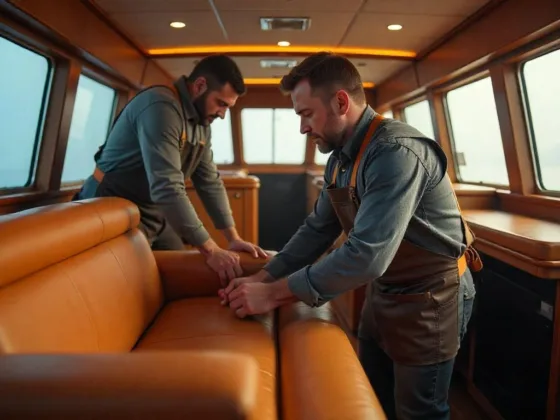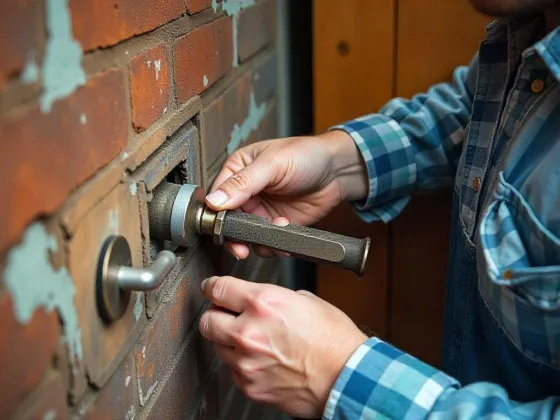Table of Contents Show
Have you ever passed through a large bridge or structures with underwater foundations? You may have been left wondering how engineers constructed these in the first place, particularly the way their foundations were rooted underwater.
Furthermore, you may have wondered how these structures were repaired and maintained!

When construction requires to be done underwater, engineers actually have large driven piles driven to the waterbed, which are called cofferdams. These will create a dry workplace to commence construction.
We’ll be tackling more about cofferdams in the next sections, so read on!
What Are Cofferdams?
Cofferdams are prefabricated walls or piles that pump water out, which create a dry working area within its walls. This will help create a dry working area within its walls, making it easier for workers to begin construction.
This invention can be dated back to the Persian Empire, standing the test of time thanks to its effectiveness, along with the lack of alternatives in terms of underwater construction.
The original cofferdams Persians used were constructed through piling earth around the area of construction, then bucketing water out, creating a dry working area.
While the process is tedious and quite risky, it used to get the job done. The earth walls will be removed after construction is completed.
After that, cofferdam engineering was then advanced further by Romans, this time woodpiles were used rather than earth. Woodpiles would be driven into the waterbed, creating a wall around the area to construct.
During the early 1900s, German engineers adopted and reinvented the similar cofferdam technique, creating modern steel cofferdams by using steel sheets over woodpiles. They created the first design using an interlocking U-shaped steep.
This innovative cofferdam design is great in controlling the water-flow, still being used by modern underwater engineers for building cofferdams with only minor changes in the interlocking design and technology.
Read Also:
Cofferdams Today
How our cofferdams made today?
The process of building cofferdams isn’t just about driving steel sheets in the ground for an enclosure. Doing this will require geotechnical expertise.
This is because the structure needs a dry surface for construction and a guaranty for the safety of construction workers and engineers who will work in the cofferdam.
As for geotechnical engineering, the steel piles need to be driven down deep so the water will not seep through. However, it shouldn’t be TOO deep, or it ends up being hard to remove after construction completion.
There are four types of cofferdams today, which are commonly used in creating a dry work area for construction.
For every type, engineers would determine the depth at which the walls need to be driven to the ground, which depends on the soil type and water table, ensuring that the water won’t seep up through the ground and into the enclosed dry work area.
It’s important to have a dry work area during the construction of support piers when building bridges, as these structures are made with concrete, which needs perfectly dry conditions when curing evenly and thoroughly.
If concrete is unevenly-cured or uncured, it won’t be able to support the immense weight, increasing the risk of it collapsing.
Besides building support piers for bridges, engineers would build cofferdams to act as a drydock for large ships that require repairing but can’t be lifted out of the waters because of their size.
However, take note that creating cofferdams comes at an enormous price, these are usually used when there aren’t any other viable construction alternatives.
Cofferdam Safety
When it comes to the safety of cofferdams, engineers would calculate the piles’ appropriate height, which changes in various water levels because of different factors, including flood, tides, among others, in order to keep the waters out.
When you erect a very tall cofferdam wall, it would increase its instability and make it difficult for cranes to offload construction materials from floating staging sites to the cofferdams.
The steel sheets will be driven to the waterbed in order to get the adequate depth, height, and shape, and afterward, water will be pumped out, creating a cofferdam with the powerful water pumps.
If ever the cofferdam would flood while in construction, there are primary and backup pumps on standby, which kicks into overdrive for the window for the crew to evacuate from it.
Once the project is completed, the walls will be pulled out with powerful cranes.
Wrapping It Up
While some underwater construction consists of southern diving, most of today’s underwater construction projects are made with the help of cofferdams! With technology advancing, building structures and foundations underwater has never been this easier.
I hope you learned a lot about cofferdams and the way underwater construction is today. Continue to learn more about underwater engineering and the entire process.
Do you have questions or want to share your knowledge on underwater construction? Share them in the comments section below, I appreciate all of your thoughts!









